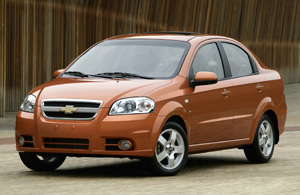
The cost of owning a car in India is expected to rise as much as 18% as the economy shifts gears.
Vehicle finance rates have hardened, the rupee has weakened and inflation has grown stronger in the last six months.
But the latest roadblock is the steep rise in fuel prices at the pump, which up to now have remained at last September’s level due to government regulation.
The political aim was to insulate both the public and business from oil sticker shock. But the effort has been in vain. Steeply rising international prices have made India’s controls self-defeating and forced a hefty increase in gasoline and diesel prices.
Until now, Indian oil companies have been powerless, with retail prices of gasoline and diesel fixed by the government at rates unrelated to the escalating cost of crude.
India imports 80% of its crude oil needs, paying an average Rs3,071 ($67) per barrel. Additionally, oil companies pay 55% combined central and state taxes on gasoline and 33% on diesel.
The cost of essential fuels has risen as well. The government-controlled price of kerosene used for cooking and lighting by the poor, has been maintained at 2002 levels, 71% below today’s cost. Liquid petroleum gas, home fuel for the middle class, has been kept at 2004 levels, 42% below cost.
Combined, oil companies have been forced to sell fuels at 33% below their cost. Last fiscal year, the industry’s loss totaled Rs400 billion ($8.8 billion). This year looked to fall to Rs730 billion ($16 billion), if no steps were taken.

The prospect of such huge losses finally has forced the government to raise fuel prices and initiate several other measures.
Going forward, financial losses will be shared more widely. Import duty on crude will be cut from 10% to 7.5%, and oil companies will be given freedom to fix future prices whenever crude goes beyond $75 a barrel.
The recent boost in pump prices means gasoline now sells in Mumbai for about $1.19 per liter (0.3 gallons) and diesel for $0.87 per liter. The price of compressed natural gas for trucks and taxis also is on the rise.
Unlike the slight uptick in the retail price for gasoline and diesel in September, state oil companies this time initially sought a 25% price jump to reflect costs of global crude and internal subsidies. However, the government only is allowing a rise of 9.2% for gasoline and 6.6% for diesel and CNG.
Not only will the higher price, albeit moderate, affect the cost of running vehicles, but also vehicle manufacturing, transportation of components and distribution of vehicles. Domestic auto makers already have started a review of car prices.
“We are seriously looking at increasing prices on all models, probably by next month,” says Wang Sik Min, executive director of Hyundai Motor India Ltd.
General Motors India Ltd. also is mulling a price hike. “The increase in fuel prices will force us to increase our prices as it increases our manufacturing and transportation costs,” Vice President P. Balendran says.
J.D. Power Asia Pacific reported the cost of owning gasoline-powered cars in India last year rose 11% vs. 15% for diesel cars. The study also found 90% of that expense came from the cost of fuel and only 10% from repairs, maintenance and tires.
With tire makers now pushing up prices every six weeks to meet the increasing costs of petroleum and rubber, the expense of vehicle ownership this year likely will grow 17%-18%.
Sales of Indian cars and utilities surged 18.5 % in April and 29.5% in May, following moderate growth in the previous fiscal year ended March 31.
Tax breaks for small cars in March mostly were offset by rising steel prices. Auto makers now worry rising fuel prices will stall a revived market.




